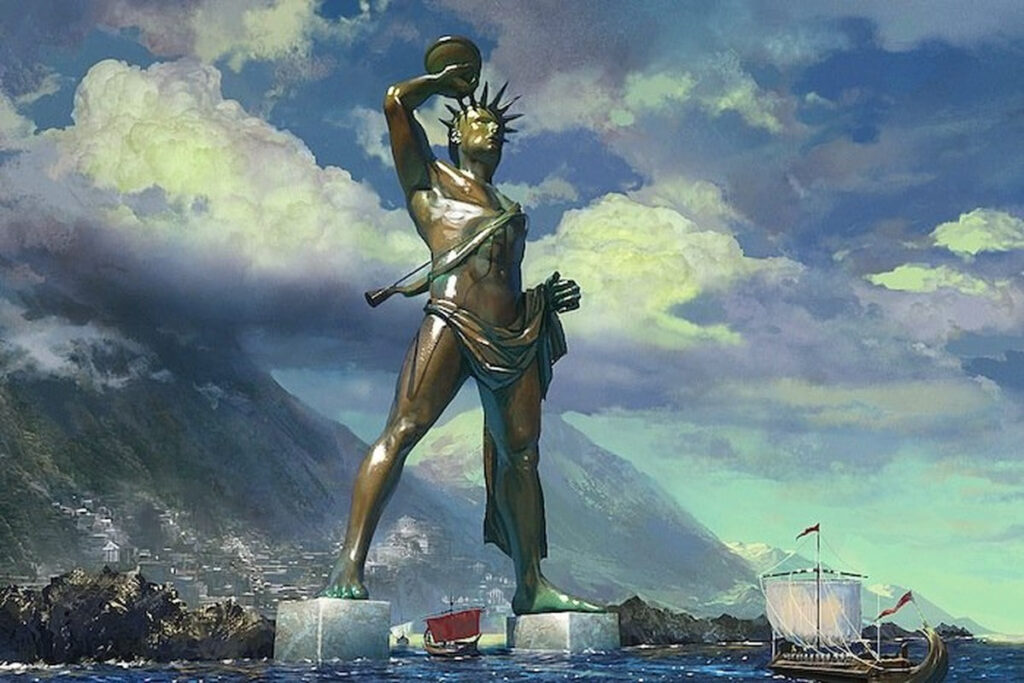
The Colossus is 32m high and stands on a 15m high marble pedestal. Ships can enter and exit the port by passing between the legs of the giant statue.
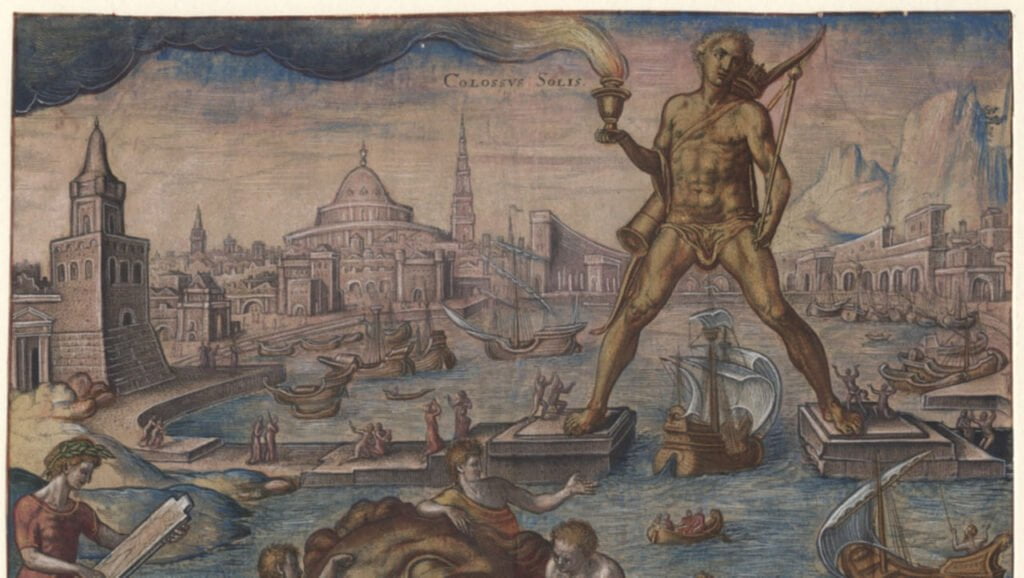
Completed in 280 BC, the Colossus on Rhodes Island is made of bronze.
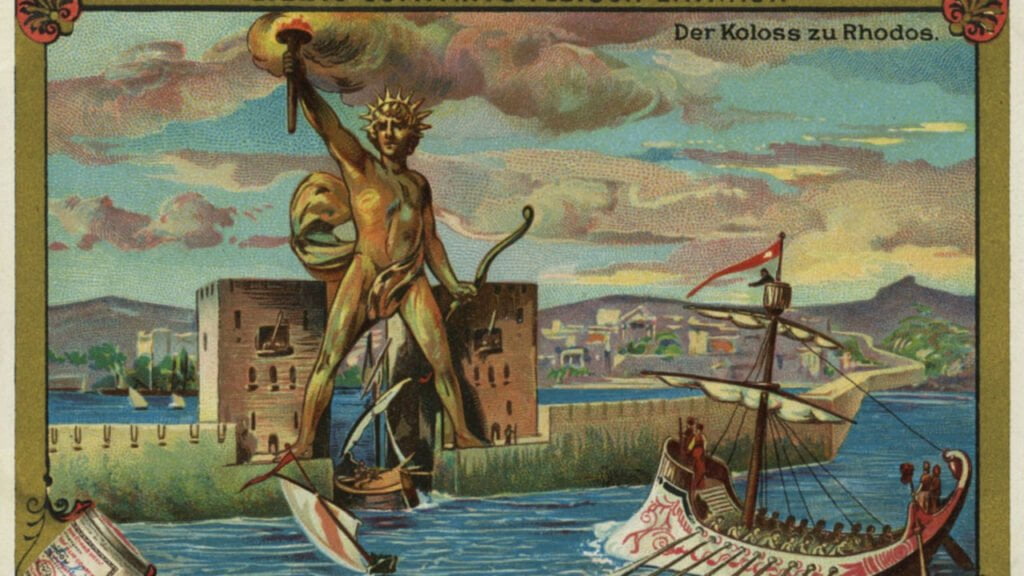
The statue depicts the image of the Sun God Helios. He is considered the patron god of Rhodes.
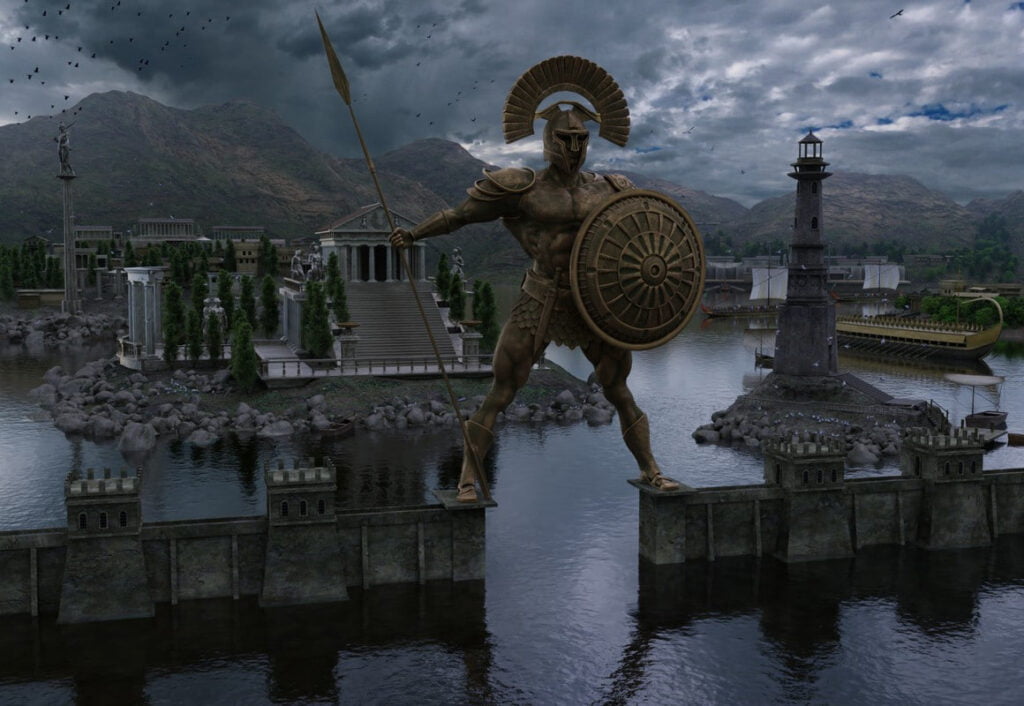
In particular, Helios is said to have made great contributions in helping Rhodes escape the siege of the Macedonian army in 305 BC.

However, in 224 BC, a strong earthquake collapsed the Colossus on Rhodes Island. Accordingly, the giant statue disappeared from the Earth.

The fragments of the statue fell into the sea. Later, a Muslim general named Muawiyah had people salvage the pieces of the statue and bring them back to Syria. This was done when Muawiyah led his army to conquer Rhodes Island in 654.

Some documents mention that Muawiyah mobilized more than 900 camels to transport the fragments of the statue of the Sun god on Rhodes Island back to his homeland. Since being taken away from the island, their fate has been a mystery.
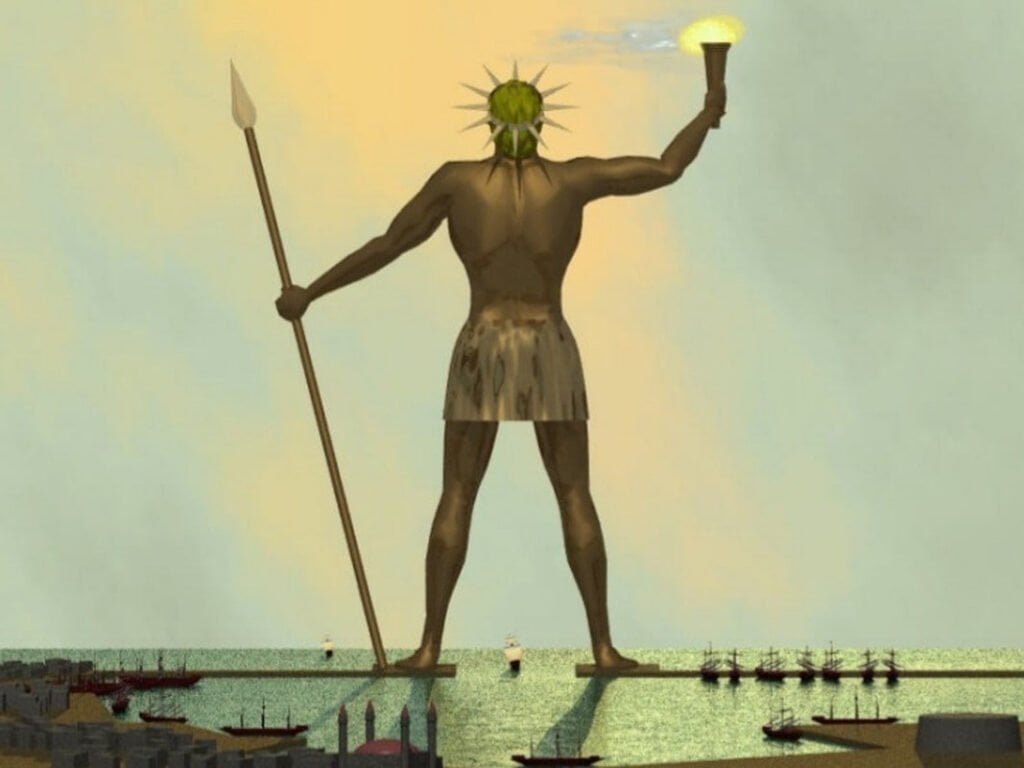
According to some documents, after the statue of the Sun god on Rhodes Island disappeared, an Egyptian pharaoh offered to donate some money to help the people of Rhodes rebuild the statue.
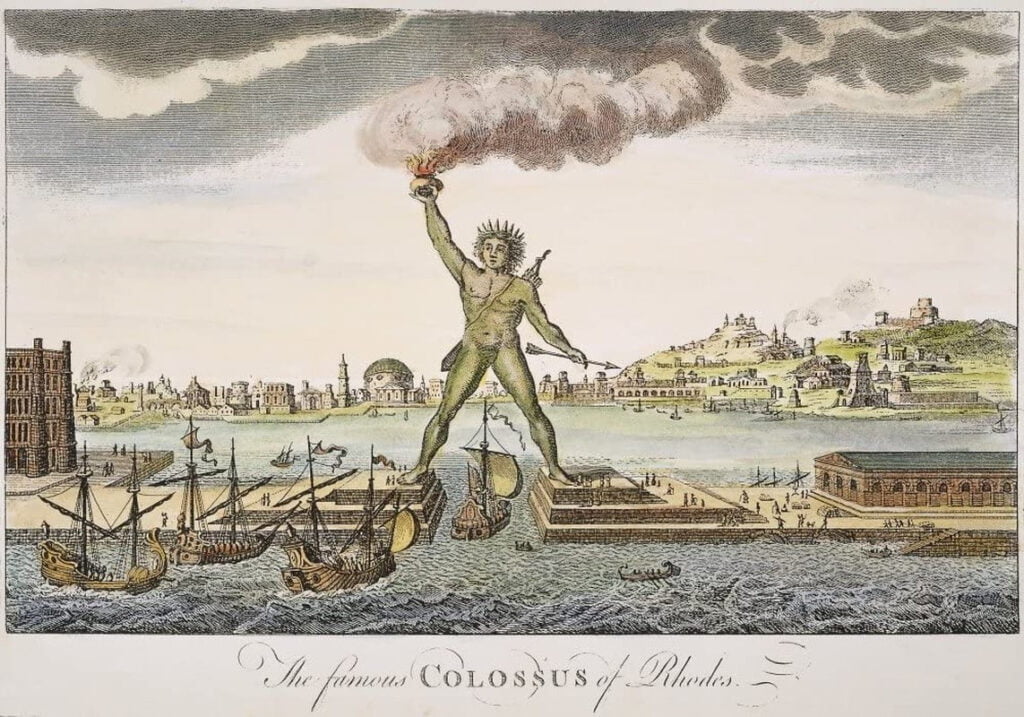
However, the people of Rhodes Island refused the Egyptian offer. Folklore has it that a prophet told them not to rebuild the statue of the Sun god Helios.





